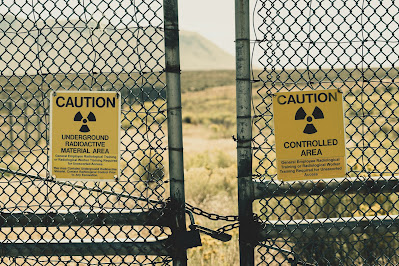Featured
- Get link
- X
- Other Apps
Unraveling ancient mysteries through archaeological discoveries
Unraveling ancient mysteries through archaeological discoveries
Archaeology is the study of human history and prehistory through the excavation of sites and the analysis of artifacts and other physical remains. Archaeological discoveries have helped us understand the past and unravel some of the mysteries that have puzzled us for centuries. From ancient artifacts adorned with intricate symbols whose meanings have been lost to the ages to ancient structures and sites that defy explanation, archaeology has uncovered many intriguing mysteries that are still waiting to be solved[3]. In this article, we will explore some of the most fascinating archaeological discoveries that have helped us unravel ancient mysteries.
## The Lost Labyrinth of Ancient Egypt
The Lost Labyrinth of Ancient Egypt is one of the most intriguing archaeological mysteries that have yet to be solved[4]. The labyrinth was described by the ancient Greek historian Herodotus as a vast and complex structure that was located near the city of Crocodilopolis in the Fayoum Oasis. According to Herodotus, the labyrinth was a marvel of engineering that contained 3,000 rooms, half of them underground, and was so complex that anyone who entered it would never find their way out.
Despite numerous attempts to locate the labyrinth, it has never been found. However, recent discoveries suggest that the labyrinth may have been located at the Hawara Pyramid complex, which is located near the city of Crocodilopolis. In 2008, a team of archaeologists discovered a network of underground tunnels and chambers beneath the pyramid complex, which they believe may be the remains of the lost labyrinth[4].
## The Unknown Burial Place of Alexander the Great
Alexander the Great was one of the most successful military commanders in history, and his conquests spread Greek culture and civilization throughout the ancient world. After his death in 323 BC, his body was embalmed and placed in a gold sarcophagus, which was then transported to Alexandria, Egypt, where it was placed in a tomb.
However, the location of Alexander's tomb has been lost to history, and despite numerous attempts to locate it, it has never been found[4]. Some historians believe that Alexander's body was transported to Siwa, an oasis in the western desert of Egypt, where it was buried in a temple dedicated to the god Amun. However, there is no concrete evidence to support this theory.
## The Nazca Lines
The Nazca Lines are a series of ancient geoglyphs located in the Nazca Desert of southern Peru. The lines were created by removing the reddish-brown iron oxide-coated pebbles that cover the surface of the Nazca Desert and revealing the light-colored earth underneath. The lines form various shapes, including animals, plants, and geometric patterns, and cover an area of about 50 square kilometers[1].
The purpose of the Nazca Lines is still unknown, but some theories suggest that they were created for astronomical purposes, while others suggest that they were used for religious or ceremonial purposes. The lines were created by the Nazca culture, which flourished in the area from 200 BC to 600 AD.
## The Moai of Easter Island
The Moai of Easter Island are a series of large stone statues that were created by the Rapa Nui people of Easter Island between the 13th and 16th centuries. The statues are carved from volcanic rock and range in height from 1 meter to 10 meters[2].
The purpose of the Moai is still unknown, but some theories suggest that they were created to honor ancestors or to represent powerful chiefs. The statues were transported from the quarry where they were carved to various locations around the island, which is located in the southeastern Pacific Ocean.
## The Tomb of Genghis Khan
Genghis Khan was the founder and first emperor of the Mongol Empire, which was one of the largest empires in history. After his death in 1227, his body was buried in an unknown location, and the tomb has never been found[6].
Numerous attempts have been made to locate the tomb, but it remains one of the most elusive archaeological mysteries. In recent years, archaeologists have used remote-sensing equipment to survey large areas of land in Mongolia, but so far, they have not been able to locate the tomb.
## Conclusion
Archaeological discoveries have helped us understand the past and unravel some of the mysteries that have puzzled us for centuries. From the Lost Labyrinth of Ancient Egypt to the Nazca Lines of Peru, archaeology has uncovered many intriguing mysteries that are still waiting to be solved. As technology advances, archaeologists will continue to explore new sites and use new techniques to uncover the secrets of the past.
Citations:
[1] https://www.thearchaeologist.org/blog/inexplicable-mysteries-unraveling-archaeologys-most-mind-boggling-finds
[2] https://www.thecollector.com/archaeological-mysteries-unsolved/
[3] https://thetravelbible.com/mysterious-archaeological-finds/
[4] https://www.ancient-origins.net/history/ten-unsolved-ancient-archaeological-mysteries-006418
[5] https://news.artnet.com/art-world/2022s-best-archaeological-discoveries-2231752
[6] https://www.nationalgeographic.com/adventure/article/150908-archaeology-future-discoveries-technology-ancient-mysteries
Popular Posts

Why are Memories Forgotten?
- Get link
- X
- Other Apps

How is the Colour of a Lobster Determined?
- Get link
- X
- Other Apps

Can Sound Waves Solve Plastic Pollution?
- Get link
- X
- Other Apps

Can Animals Recognise Human Faces?
- Get link
- X
- Other Apps

Do plants sleep? The surprising science of sleep in the plant kingdom
- Get link
- X
- Other Apps

Is the Earth Spinning Faster?
- Get link
- X
- Other Apps

Can Bad Times Actually Improve Your Life? Surprising Benefits of Adversity
- Get link
- X
- Other Apps

Can Brain Implants Make You More Powerful?
- Get link
- X
- Other Apps

The Future and Potential of Nuclear Batteries
- Get link
- X
- Other Apps

Music and its impact on Studying
- Get link
- X
- Other Apps
Popular Posts

Why are Memories Forgotten?
- Get link
- X
- Other Apps

How is the Colour of a Lobster Determined?
- Get link
- X
- Other Apps

Can Sound Waves Solve Plastic Pollution?
- Get link
- X
- Other Apps

Can Animals Recognise Human Faces?
- Get link
- X
- Other Apps

Comments
Post a Comment